After exploring and making deep cone kilns, cylindrical kilns and pyramid kilns in Switzerland, Canada, and California it seemed they presented the fastest way to get into biochar making on the small property. I was keen to set them up on my own property in Australia.
The goals were:
These goals were largely accomplished between February and May 2015, and are reported in the next several blogs. Videos are published on The Biochar RevolutionYouTube channel.
In this blog I discuss the design, construction, and operating of a Kon-Tiki kiln to produce (7.5cu meters or over 1 ton (oven dried basis) of biochar.
1.65M DIAMETER DEEP CONE KILN
From an Australia 1.2m x 2.4m mild steel sheet, the maximum sized Kon-Tiki with a depth of 90cm (any deeper becomes inconvenient to use) is 1.65m diameter with an angle of 64.5 °.Volume is 1.1 m3
An extra partial sheet is required for the base. Base can be flat instead of domes or coned.
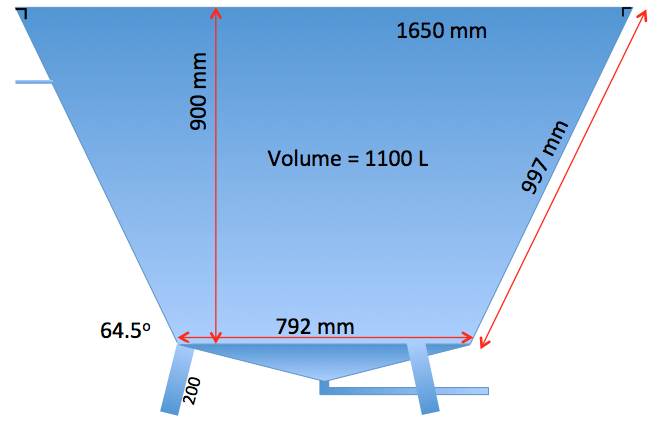
Trailering the Kon-Tiki
The load includes a smaller cone inside the large one, rim-shield,
cone-extensions & large flues all to be used eventually in emissions studies

COMMISSIONING KON-TIKI AUSTRALIA


The biochar was quenched by water spray from above. A pleasing start.
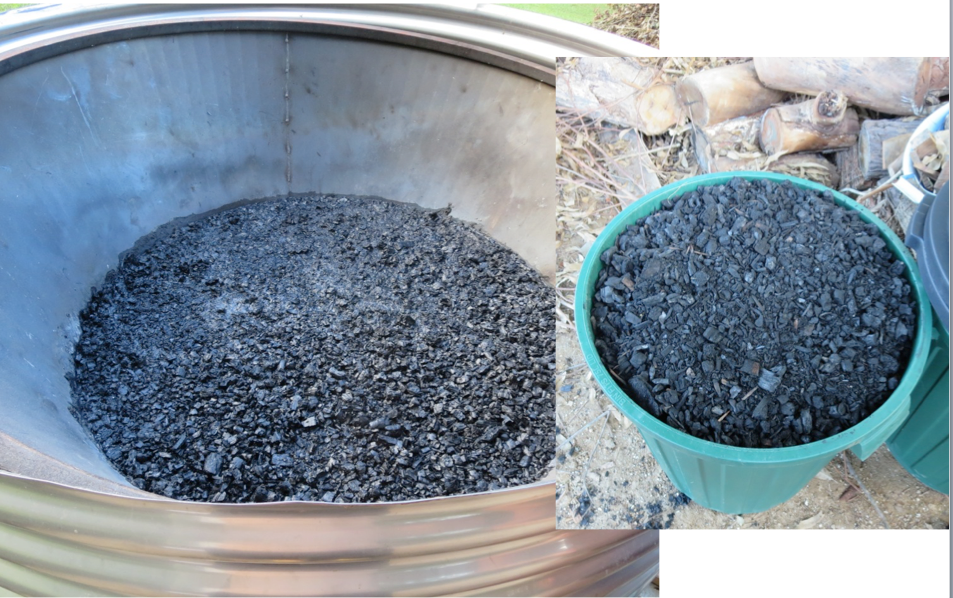
TILTING MECHANISM FOR EASY REMOVAL OF BIOCHAR
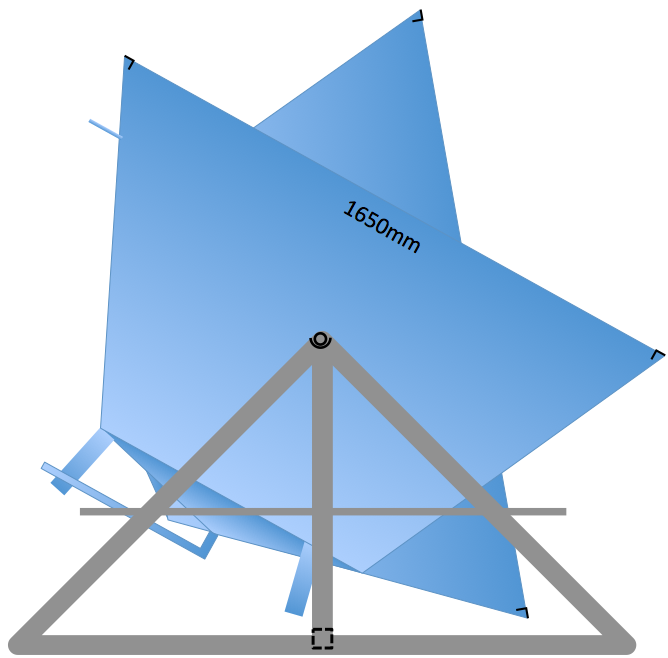
FEEDSTOCK ARRIVES FROM SAWMILL
STACKING STARTING FUEL
The deep cone is stacked to near the rim with bushy fuel to allow top lighting in free air.
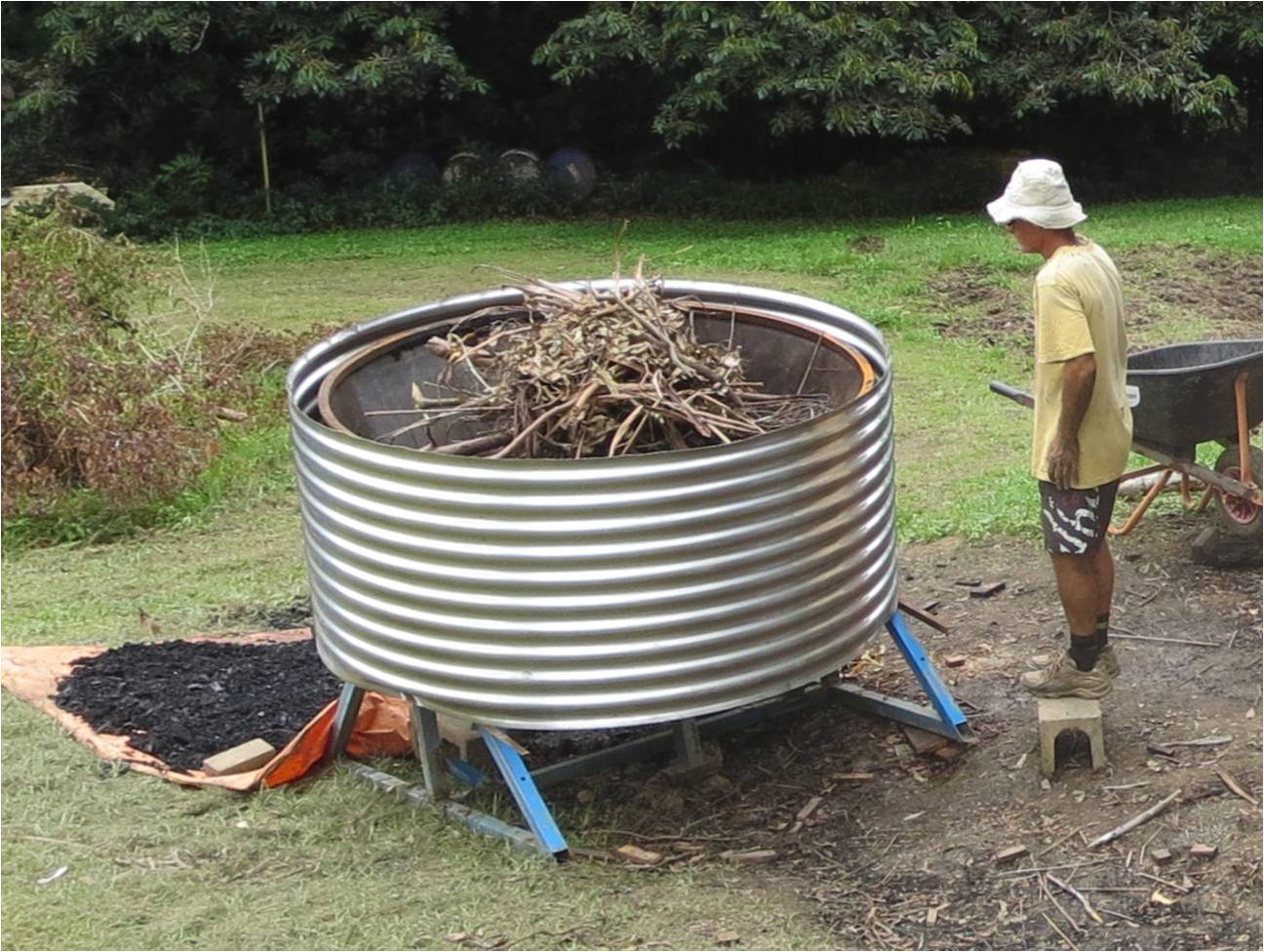
FIRING
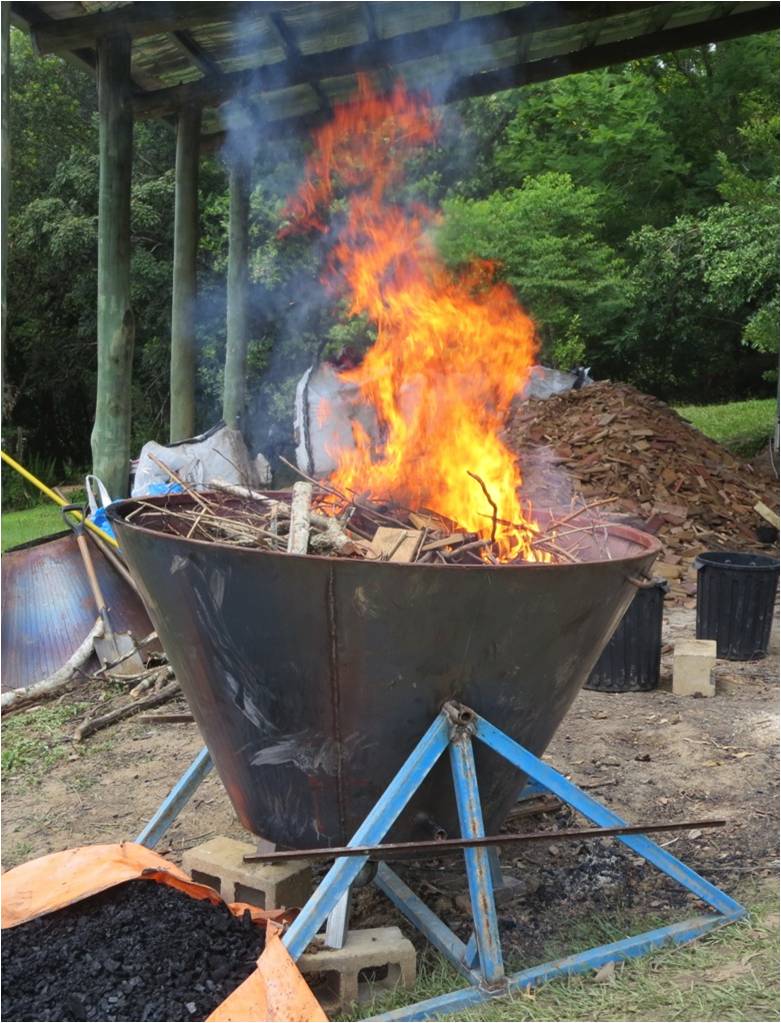
Here, without the rim shield, can be seen:
A bed of coals and fire in the bottom of the kiln
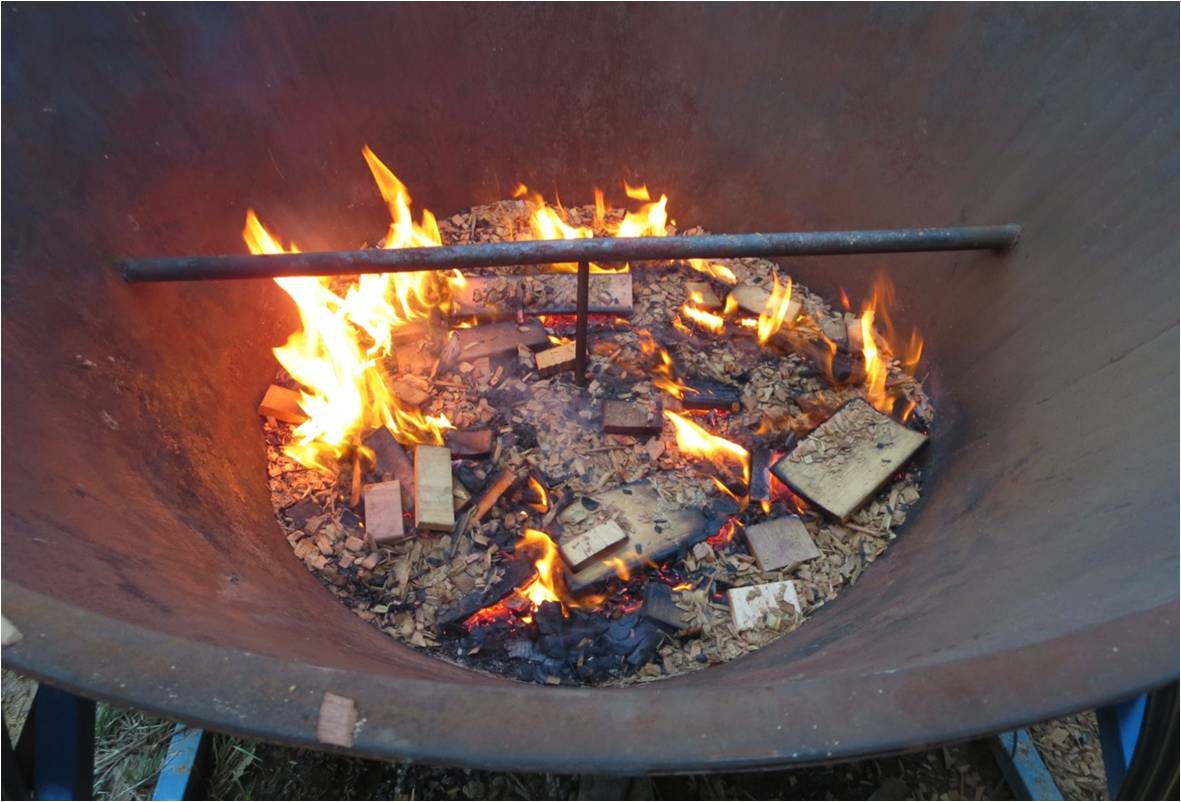
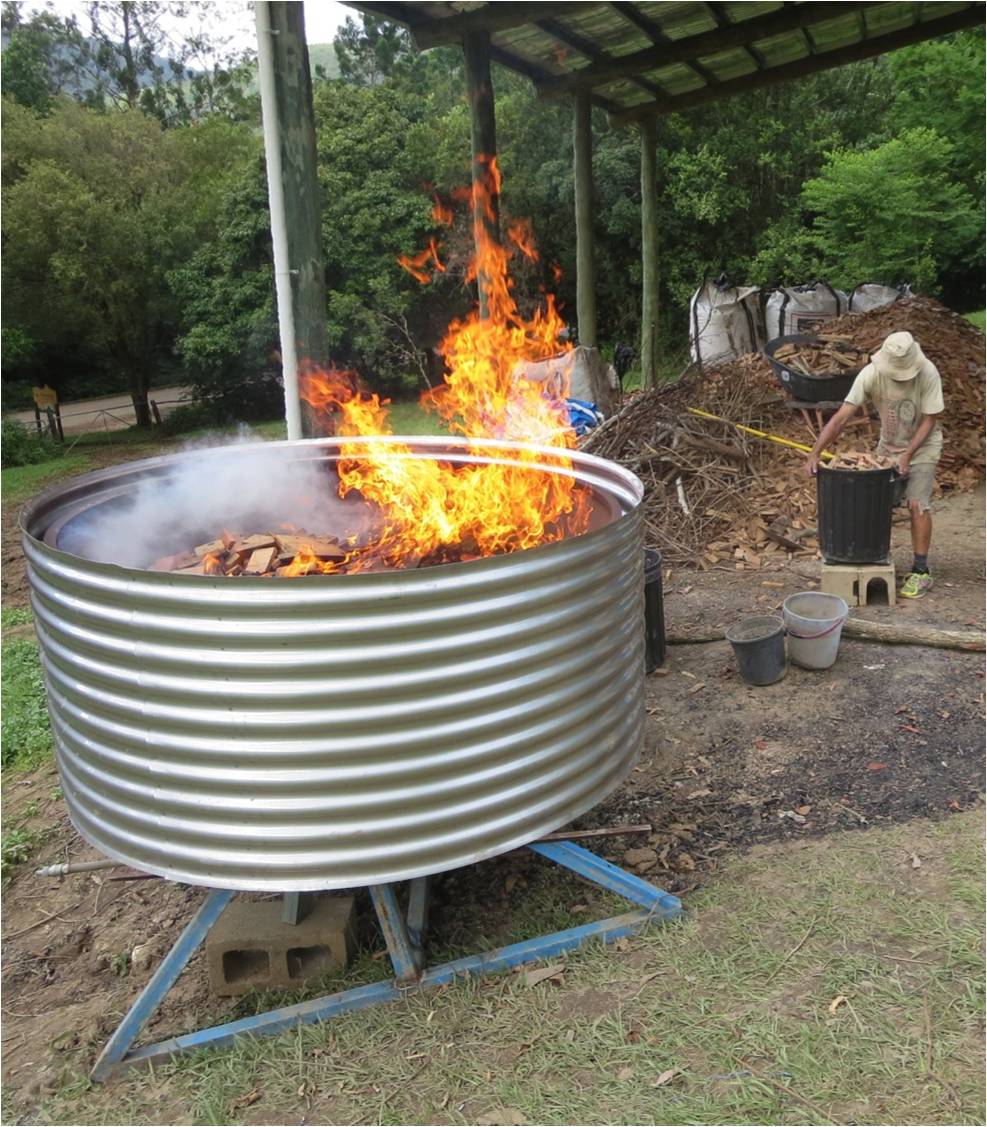
DURING THE RUN



MONITORING TEMPERATURES
Pictured is a long thermocouple probe inserted into biochar after misting, which cooled top surface at end of day’s run


Temperatures were measured by inserting long thermocouple probes into tubes 15cm from bottom, 41 cm from top of cone, and also directly into biochar at top. Typical: Low ~ 300oC, Middle ~ 650oC, Flaming Layer ~ 730oC Every layer in the kiln experiences these temperatures starting at ~730oC, soon dropping to ~650oC, then soaking at lower temperatures as the layers accumulate.
QUENCHING
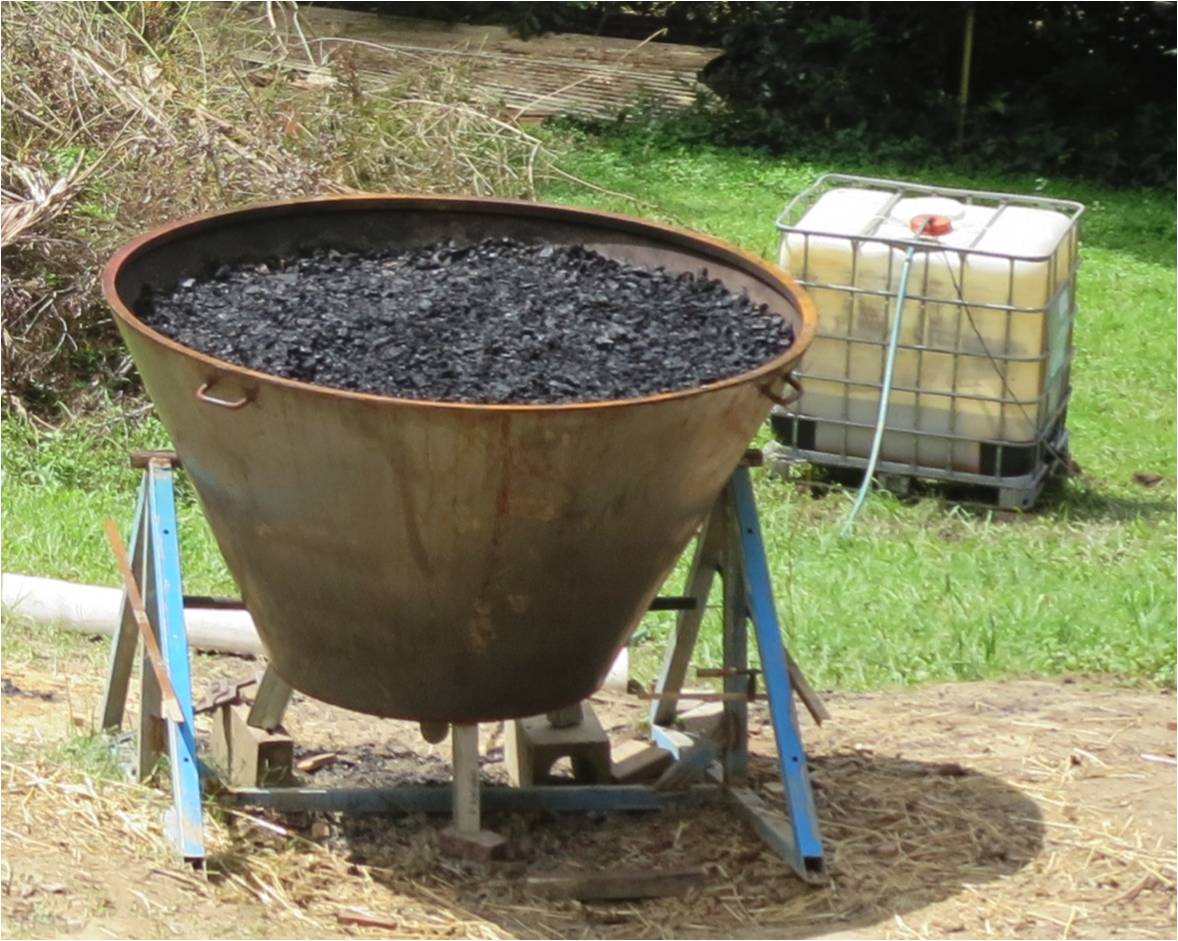
Quench water from 1000L bulk liquid tank (optionally with nutrients) is:
EMPTYING THE BIOCHAR FOR SUN DRYING
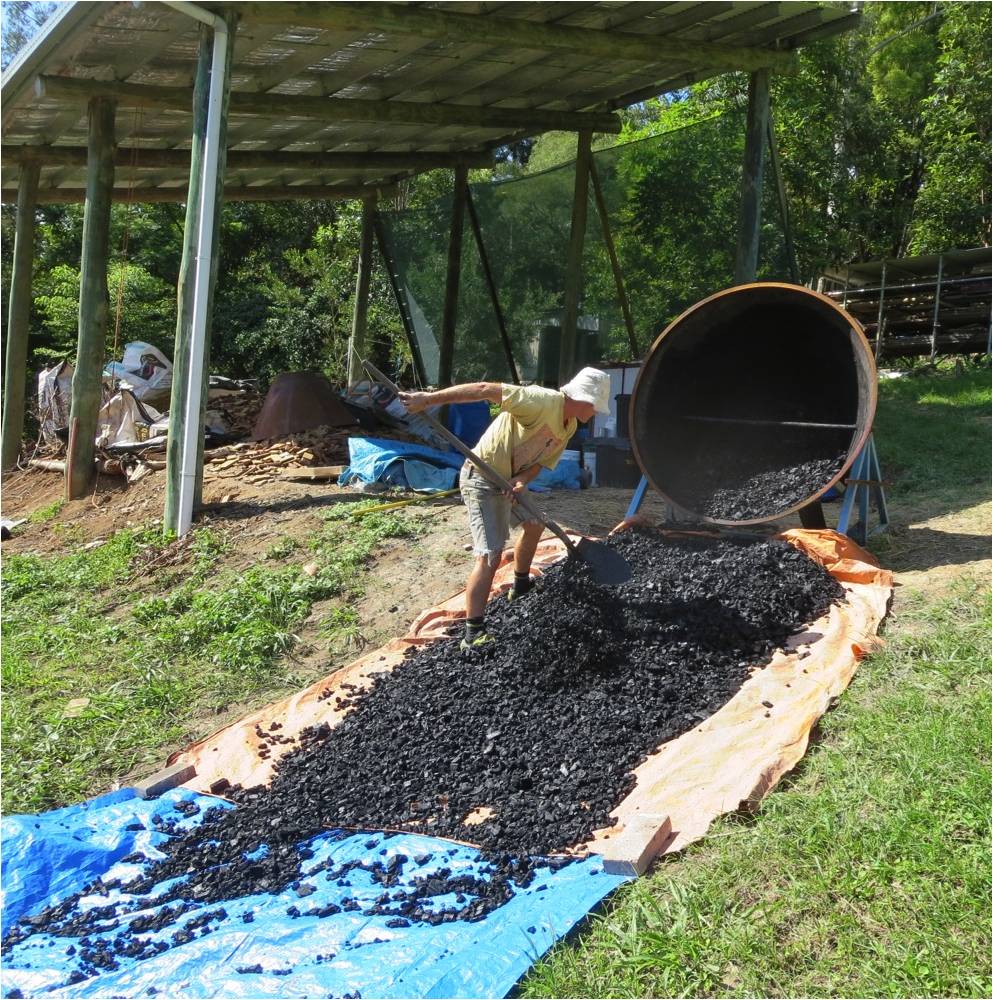
PROCESSING


ANALYSING


SUN DRYING & STORING LOTS OF BIOCHAR

Sending off for farm field trials
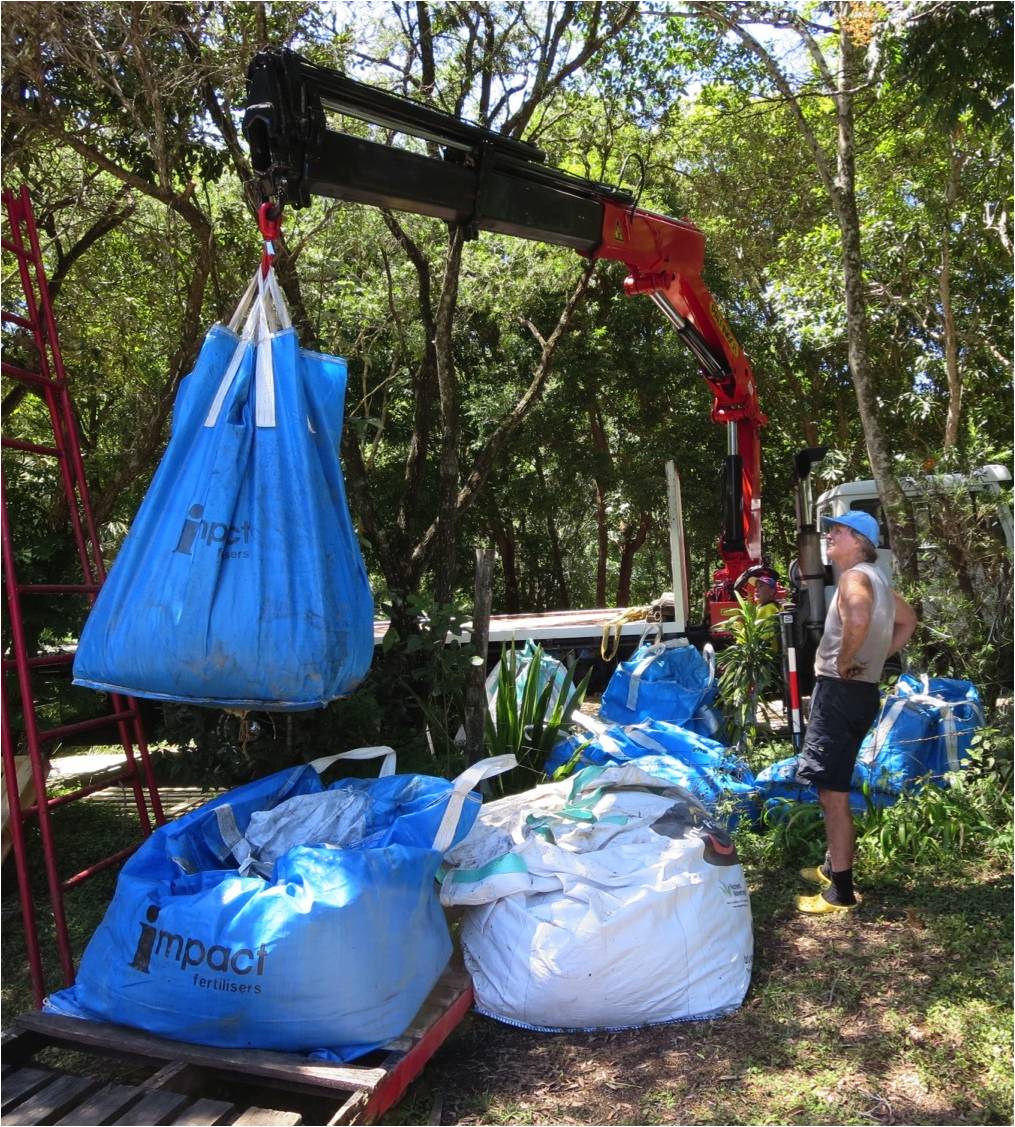
Biochar made in Kon-Tiki in 10 runs in 1 month:

ANALYSIS OF 4 BIOCHARS, 22 APR 2015
| Unit | Limit of reporting | Plain Wood Biochar | Sea Mineral Biochar | Gypsum Biochar | Enhanced Biochar BOMC | |
|---|---|---|---|---|---|---|
| EC | dS/m | 0.01 | 1.2 | 1.5 | 2.7 | 3.0 |
| pH(CaCl2) | pH units | 0.04 | 6.9 | 7.6 | 7.1 | 7.1 |
| Ammonium-N | mg/L | 0.03 | 0.87 | 0.19 | 0.19 | 11 |
| Nitrate-N | mg/L | 0.02 | 0.30 | <0.20 | 0.10 | 0.30 |
| Total Nitrogen | % | 0.02 | 0.14 | 0.16 | 0.12 | 1.4 |
| Total Carbon | % | 0.2 | 81 | 81 | 56 | 43 |
Plain Wood Biochar: Biochar from wood blocks. Sea Mineral Biochar: Biochar from wood blocks quenched with Sea Minerals water. Gypsum Biochar: Biochar from wood blocks, wood chips and gypsum (64%, 23%, 13%). BOMC: Biochar-Organo-Mineral Complex from wood chips, manure, clay, minerals. See next blog. All biochar quenched also with smoke water. All biochar buffered with phosphoric acid to target near neutral.

Leave A Comment